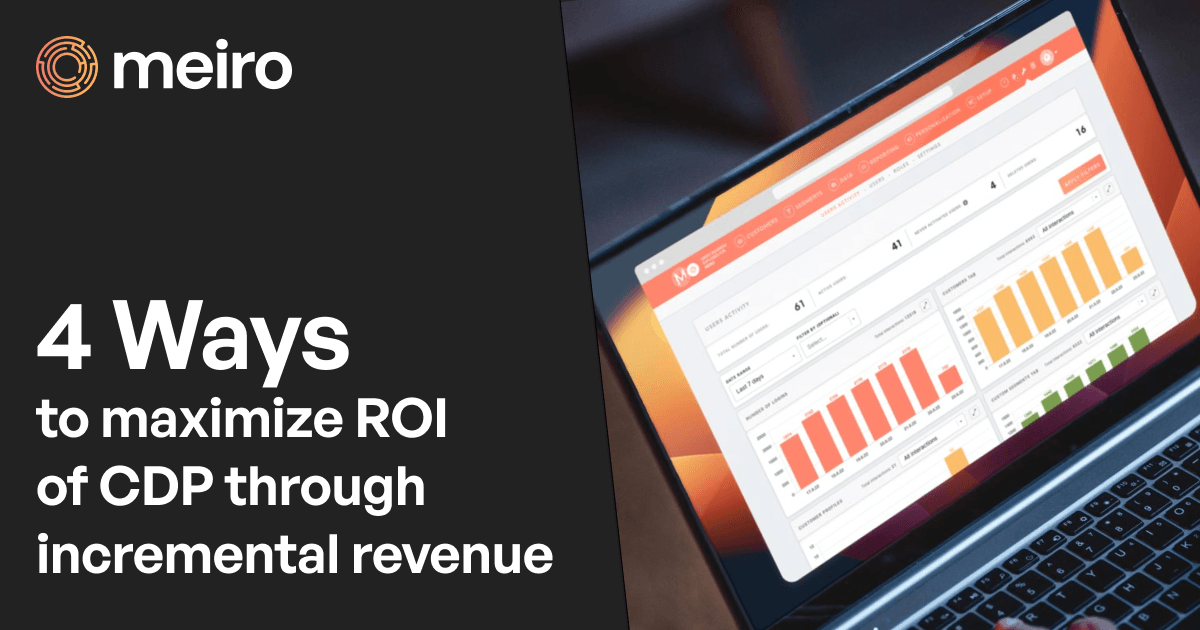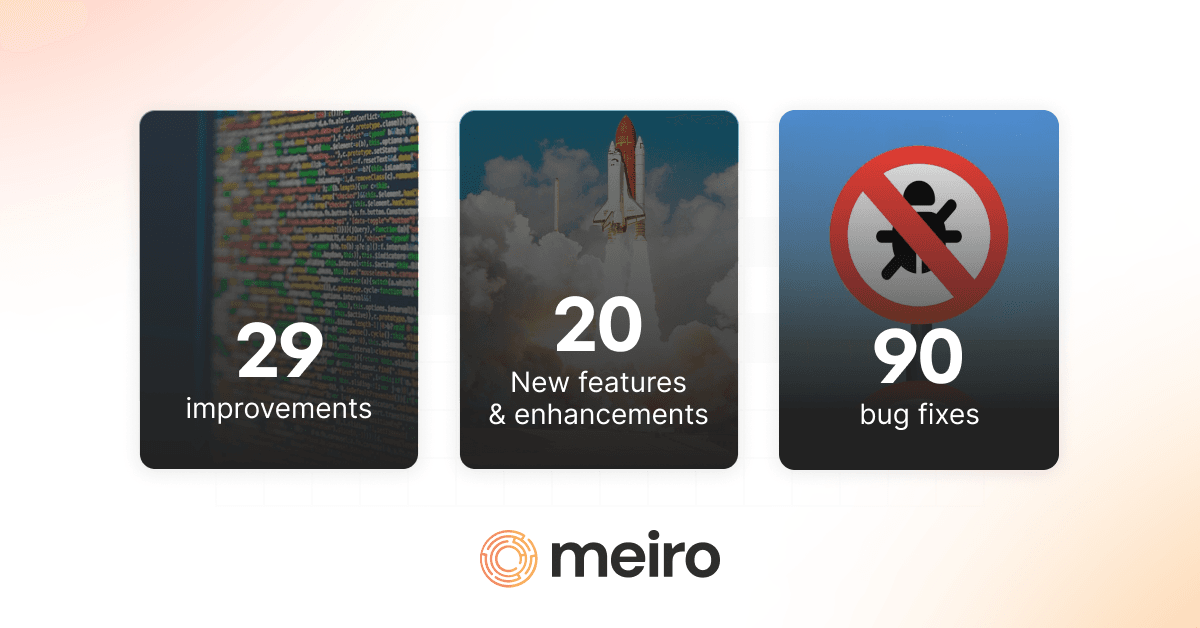The CRM is dead. Long live the CDP
Why do you need a CDP if you already have a CRM? Because a CDP can make the difference that a CRM simply couldn’t.

CPO | Co-Founder
Sure, Customer Data Platforms (CDP) are all the buzz in the Martech world. But at Meiro, we’re still often asked the question:
“What’s the difference between a CDP and a CRM? Don’t they serve the same purpose?”
So let’s be clear. There is a difference. Quite a big one. Let’s get into it

CRMs (Customer Relationship Management tools) started out in the world of B2B and have slowly made their way into utilization for B2C businesses too. On the other hand, CDPs have risen in the past few years to become a martech necessity, bringing cohesiveness and efficiency by connecting data from various touchpoints to the myriad marketing tools of today. In fact, Gartner recently listed CDPs as the first among trends that will transform marketing technology systems. In recent years, it has become apparent - CRMs are not the golden bullet of marketing. They have their role indeed, but they have shortcomings and pitfalls as well. Let’s take a comprehensive look at what they are by understanding the differences between CRMs and CDPs.
| CRM | vs. | CDP |
|---|---|---|
| Transactional Age Business Tool | Online & Offline Age tool | |
| Sales tool | Marketing & Customer Experience tool | |
| Analyzing & Forecasting for sales data | Integrate data across multiple touchpoints | |
| Delivers transactional CX Data | Helps to orchestrate and manage CX operations by delivering behavior CX data | |
| Collates data mainly from sales | Analyzes data from every digital, social, transactional data points | |
| Sales & Post-sales customer service | Analysis of entire customer journey | |
| Zero Identity Resolution | Complete record of unique customer identities. | |
| Data Redundancies | Unified view of all customer data |
Age differences
CRMs have been around a long time, but haven’t come a long way. It started out more than 30 years ago in its computerized version as a B2B tool – a notepad for salespeople to keep track of their customer interactions. Though most modern CRMs only feature a few more bells and whistles, while still featuring and delivering the same pipeline functionalities. CDPs though, have only come to the fore of marketing since 2016, and have become the tip of the marketing spear in the last couple of years. CDPs have enabled marketers to work with a complete array of customer behavior from all available online and offline data points. Creating a complete customer view became a critical factor for managing the Customer experience and getting a deeper understanding of the customer journey, the main reason for any digital transformation.
What’s changed?
In an earlier age, a company only had a handful of touchpoints and campaigns. CRMs sufficed to keep tabs on customer interactions and transactions. These days though, the number of touchpoints have increased exponentially – A study by Google identified consumer journeys of anywhere between 20 to 500 touchpoints – email, ads, social media, mobile, websites, apps and the list goes on. Multiply that with the complexity of interactions, and the amount of data for one single customer is immense. Simply put, by design a CRM cannot analyze, integrate, or manage such quantities and various types of attributes. CDPs however offer a solution to this data complexity by unifying customer data from multiple touchpoints and consolidating it instantly into a single unified, actionable view. And here we touch upon one of the major differences, the Identity Resolution.
Identity resolution
When a customer walks into a store, he or she becomes a credit card number. On call, a phone number. On your website, a cookie. And when signing up for your newsletter, an email address. And consider, that this might be the same customer who interacts differently, via different devices, with each of these touchpoints. How could we link up the identity of this customer across channels? This is of course, a newer problem caused by today’s easy access to multiple channels and the increasingly high level of consumer digitalization. CRMs cannot possibly solve it. CRMs are used for tracking transactions, analyzing the pipeline, and managing customer health - tracking each channel separately. On the other hand, a CDP automatically links up multiple identities of your customers and stitches together a persistent identity to build a single customer profile. No matter whether the customer is repeated, or even anonymous. Providing marketers a richer insight of their historical and behavioral data – website visits, mobile apps, calls to the call center – all to enable a more detailed personalization.
Who uses the tools?
CRMs are used mostly by salespeople and business dev teams to manage their customer base. CDPs are a marketer’s best friend because of their detailed customer and user data capabilities. Though certain functions of a CDP might prove valuable for decision making to other roles within your organization, such as customer service, call center, sales, and others. That’s not all. A CDP can effortlessly and securely integrate back and forth with other tools and systems, your own, or 3rd party’s. CRM, on the other hand may not be able to provide safe access to your advertising partner. Data sharing becomes a concern with every use-case when dealing with CRM. With CDP comes structured data governance, to comply with data privacy laws and regulations.
The big question remains.
But you might still be asking - Why do I need a CDP if I already have a CRM? The answer to that is because your CRM is simply not up to the task of fully managing the customer journey. Not anymore. A CDP can amplify and complement your marketing efforts and make the difference that a CRM alone simply couldn’t. The next step to confirm your answer about why you really need a CDP, is to do a thorough requirement analysis and ask yourself a few questions. Q1
Am I able to optimize my marketing data utilization, or are there limitations?
If you’re using a CRM, then probably not. CRMs are not built for analyzing and linking data, or for connecting to your systems. CDPs instead can effectively segment and target customer data and deliver to your activation platforms. Q2
Which systems would the CDP integrate from? Or with?
Connectivity is what makes a CDP so effortless and essential. Meiro CDP for instance, lets you connect from all your core systems like your EDM, Loyalty Programs, Websites, your CRM too, and more. Delivering to your data warehouse and then also delivering cleansed, consolidated data to systems that can action it – like ad buying, DMP, Customer care, etc. Q3
Can a CDP help solve my martech stack inefficiencies?
A CDP can be the core of your martech toolbox, with data more easily flowing within your ecosystem. You may have noticed your organization spending valuable time on data prep. Meiro CDP offers data that is directly available in the databases you own and control – cleansed, consolidated, and ready to use. Q4
Would CDP implementation bring value to other utilisations too?
By now, it’s obvious a CDP is a necessity for your marketing team. But a CDP should be useful to other teams too. Meiro CDP uses a non-technical interface that’s easy to use by any member in your organization – so it can be effectively wielded by your Customer Experience, Business Intelligence Teams, Sales teams, for sharper actionable insights into consumers - as well as Finance for making more data-led decisions.
In conclusion
Digital transformation (DT) is essential to every company's success as DT is centered around recalibrating the organization’s operation through the customer experience. And that is possible with unifying and analyzing all customer data points in CDP. Now that you know just what a CDP does, what role it has, and how it can step up from, or even complement the functions of your CRM – it’s time to look within your organization and reflect on whether you need one. We will follow up next week with a Q&A write-up that could help you to drive the internal discussion within your organization. Or, simply get in touch with us for a brainstorming session on optimizing your data-driven marketing.
Ready to take your personalization game to the next level?
Unleash the full potential of your customer data. Let’s talk!
Spread the love:

Pavel stands behind all the smooth operations and business growth. You would run into him in the queue at airports rather than in one place. Besides that, he enjoys chess, boxing, and history.


